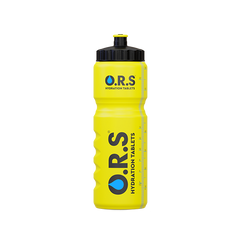How Did A Cholera Pandemic Change Sports Hydration?

Hydration is more than just drinking water, and if you are working up a major sweat, you need to not only drink lots of water but replenish and refuel.
The most efficient way to do this is with electrolyte tablets, which taste fantastic and help prepare you for the next big workout, race, or sports event.
This is because when you sweat, you lose not just water but also sodium, potassium, calcium, and magnesium, as well as urea and lactic acid.
Despite looking like water, sweat has more in common with blood plasma, and water alone, even in a hard water area, will not get all of these essential components of the blood back into the body.
Rehydration is complex and often involves getting electrolytes, salts, proteins and glucose back in the body to get the body re-energised and ready to get back in the gym.
However, the original development of what would become oral rehydration therapy is nearly two centuries old and was part of an attempt to save lives in the midst of a 19th-century pandemic.
The Dehydration Disease
A disease spread by unclean water supplies, cholera is a disease that causes intense stomach pains, nausea and intense dehydration that can get so serious it turns the skin blue within a matter of hours.
Left untreated it has a 60 per cent chance of being deadly today, but in the 19th century, back when doctors thought diseases were spread via miasma, this meant that the second major pandemic and the first to spread across continents killed more people than any other 19th-century epidemic.
However, it was also when the first steps towards reducing its capacity to cause death began to be found.
The pioneering pharmacologist Sir William Brooke O’Shaughnessy has many incredible achievements and first under his belt, but one of his first and biggest accomplishments was his early study of cholera victims when he was still a young doctor in London before he moved to India.
What he found in 1831 was that the blood of people who had died of the disease had lost not only water but also salt and what he described as “free alkali”, which could refer to various other trace minerals, waste and toxins that are also found in both blood plasma and sweat.
He first tested his thesis on a dog and proved promising enough that it would later be developed further by Thomas Latta into what we now know as a saline drip, a now-standard piece of medical equipment.
He would detail in almost poetic detail the effect it had on his first patient, an older woman who was believed to be in the late stages of dehydration caused by cholera. Six pints of saline solution restored her back to health.
It proved to be incredibly effective, but for unknown reasons was not widely used until the tail-end of the 19th century. It was believed that the reason for this was partly because the epidemic had run its course but also because saline was relatively inconsistent at that time.
This was before many of the details of homeostasis and electrolyte balance were known, so it took until 1902 for rehydration therapy to be widely and consistently used.
It would take until the 1920s for this to leave the world of medicine and enter the world of sport and to a degree general health.
It took until 1923 before the idea of drinking water during exercise and strenuous activity was seen as vitally essential. This type of thinking led to the infamous 1904 Olympic Marathon, an event infamous for becoming an experiment in purposeful dehydration, where more rat poison and brandy were consumed during the race than water.
The idea of thermoregulation and its effect on the cardiovascular system changed a lot of perceptions about not only the importance of drinking water but also the concentration of minerals and other ingredients within it.
It was around this time in 1927 that Professor Pyrus created “Glucozade” as a tonic for a child suffering from cyanosis in the run-up to a hospital procedure, which was later sold by William Walker Hunter, sold to Beecham’s in 1938 and eventually marketed as a sports drink starting in the 1980s.
Whilst oral rehydration was being developed in parallel to this, it highlights how important it is to not only rehydrate but ensure that you replenish the minerals you lose through working up a big sweat, ensuring you can work harder and push further the next time round.

